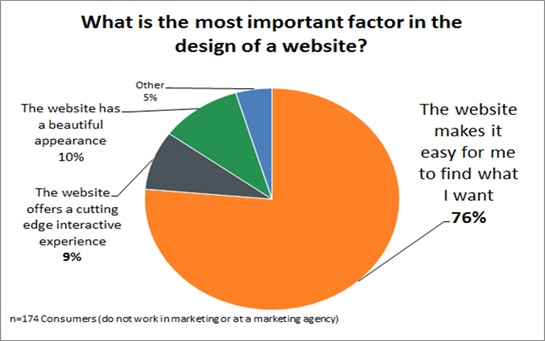
Squarespace is fast becoming a popular website platform due to its attractive templates, easy to use content management system (CMS) and flexibility. It provides a comprehensive and robust set of features, including e-commerce functionality.
However, Squarespace receives some flak when it comes to the SEO (Search Engine Optimization) department. This is not because a page on Squarespace can’t rank high in search results but because certain aspects of optimizing a page for higher ranking is not straightforward.
This post will explain a few techniques that will help your page or site gain higher position on Search Engine Result Pages (SERPs). But before we get into the nitty-gritty of Squarespace SEO, it might serve us well to take a look at SEO in general.
SEO overview
Search Engine Optimization (SEO) refers to the practice of improving a website’s ranking in the search engines. It allows your site to appear for relevant keywords and phrases on the Search Engine Result Page (SERP).
There are three components to SEO:
1. Content
Creating compelling content has a huge influence on your website ranking. According to Google’s SEO Starter Guide: “Creating compelling and useful content will likely influence your website more than any other factor. Users know good content when they see it and will likely want to direct other users to it. Organic or word-of-mouth buzz is what helps build your site’s reputation with both users and Google, and it rarely comes without quality content.”
If you are not adding quality content to your website regularly, others cannot link to your site and Google will fail to crawl your site. This brings us to our next point.
2. Links
Inbound links are vital aspects of any SEO. These are links on another site that point back to your site and are plays a significant role in improving the credibility and ranking of your website. No matter what content management system you use (Squarespace or other), both quality content creation and inbound links are important aspects of the SEO strategy.
3. Crawling
After adding quality content to your site and getting inbound links from other sites, Google will crawl, index (organize) and rank your site for users to find when they look for keywords similar to the keywords you have used on the site. Google uses ‘spiders’ and ‘bots’ to search for new pages and rank those pages based on various factors.
Understanding these factors brings us to the topic at hand, that is Squarespace SEO. To ensure that your site gains top positions in SERPs, you need to incorporate the following factors into your website.
1. Register your site with Google Search Console and Bing Webmaster Tools
Registering a website with Google Search Console and Bing Webmaster Tools is something all site owners should do. By registering your site with the two services, you ensure that it gets crawled by search engines in future searches.
It is important to know that with Google Search Console, you should register both the www and non-www version of your domain and both the secure and non-secure version (http:// and https://) of your website.
2. Optimize images
Images are often ignored in Squarespace SEO effort, but they are important and need to be optimized. Images that load slowly can reduce your page speed, which is a ranking factor for various search engines.
With the launch of Google and Pinterest Lenses, visual search is on the rise; hence, a focus on this factor can help your site achieve top ranks in search results.
3. Update your homepage’s title tag
Google focuses explicitly on unique and accurate page titles as titles give users and search engines an idea about the topic of a particular page. When a site appears in SERP on Google, the contents of the page usually appears in the first line of the Google results. In Squarespace, every page has a page title that can be edited in the page settings.
4. Keyword Research
Keyword research plays a crucial role in Search Engine Optimization because you will discover related topics and user questions. To make keyword research easier, make a list of the keywords and key-phrases you want a topic page to target. Search your topics and look at how your competitors have used the keyword. This will give you an estimate of the efforts required to rank above them.
While there isn’t an exact keyword density that you should follow, a good practice is to use it in the title tag, in the header, and a few times in the main content.
5. Intent-based optimization
Search results are becoming more contextual and search engines are now focusing on matching search results to the searcher’s intent. Google is trying to integrate AI into its search algorithm for a more personalized experience. It combines historical information, present context and the intent of the query to return the most relevant answer to the user.
Google recently confirmed that its ranking factors largely depend on the keyword intent. So, a shift to a more contextual intent-based content optimization can be noticed in searches.
6. Offer high-quality content
Search engines algorithms continue to become more sophisticated, so there is an increasing need for quality content. Productive and unique content is now an important ranking factor for search engines.
According to Search Engine Journal, sites that provided exceptional content have constantly soared higher in ranking compared to those with weaker content depth. Therefore, you must provide unique and top-notch content that answers the questions of potential customers.
7. Optimize for Mobile and Voice search
In 2016, Google integrated AMP listings into its mobile search results. The framework is developed to facilitate the loading of web pages on mobile devices. Mobile optimization has a significant impact on the organic visibility of a website as 57 percent of the web traffic now comes from mobile devices. Moreover, faster loading pages have resulted in a significant increase in traffic. With the prevalence of smart devices, you need to put mobile first.
Voice search has also gained popularity in recent years. Google reports that 55 percent of teens and 40 percent of adults now use voice search more than once a day. With its increasing popularity, chances are that websites that can’t be reached by voice search may lose some of their rankings in 2019 and onwards. For the local business owners, it can prove to be a powerful conversion weapon if your onsite and offsite activities like business listings are properly aligned. For example, if a user is searching for an Orlando SEO Company using voice search then he/she will only get the Google Map results in return. If a user finds your website there, then there will be an optimum chance of getting a conversion.

8. Site Navigation
Navigation of your website is necessary both for visitors and search engines. It helps the visitors quickly find the content they need, and also helps the search engines understand what content you think is important. Websites with complex navigation lose traffic as users get frustrated by the complexity of the site. According to 76 percent of consumers, easy site navigation is the most important characteristic in the design of a website.
It is important to submit an XML Sitemap to Google to help them easily discover your site. An XML Sitemap is a list of pages on a particular website. By submitting the list, you notify Google of all the available pages on a website, including any URLs that may have been undetected in Google’s usual crawling process.
To view your sitemap in Squarespace, add /sitemap.xml to the end your domain. You can connect the sitemap to Google Search Console to ensure Google crawls your website.
Conclusion
Squarespace SEO can be tricky if you are used to working with a different CMS. However, by following the tips mentioned above, you can improve your site’s ranking and the traffic that your website receives.
